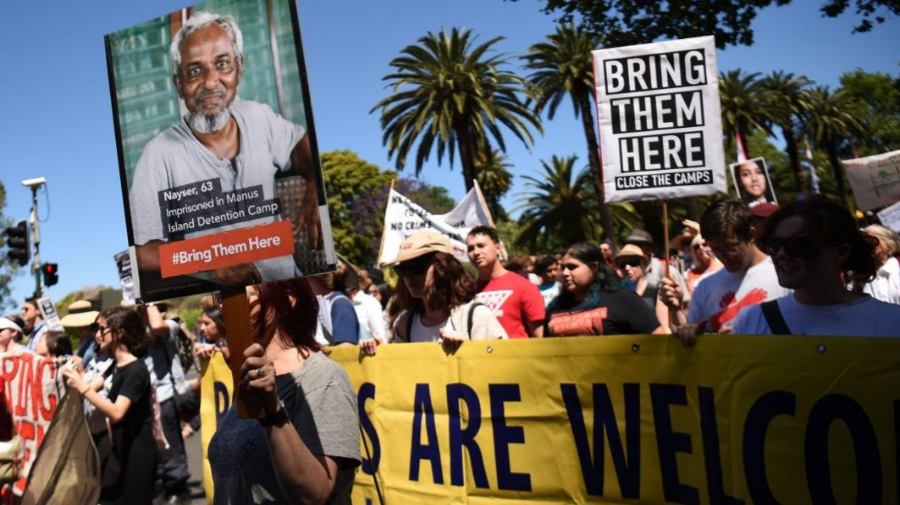On April 14, a shooting occurred at the Manus Island Detention Centre in Papua New Guinea, where more than 800 refugees and asylum seekers were detained by the Australian government. The media reported that shots had been fired into the Centre , which endangered detainees. Manus police commissioner David Yapu disagreed: “The soldiers fired several gunshots in the air causing great fear and threats to the local and international community serving at the centre.”
Amnesty International conducted research from thousands of miles away from the incident and presented our findings in this report , “In The Firing Line: Shooting at Australia’s Refugee Centre on Manus Island in Papua New Guinea.” After the report was published on May 15, Commissioner Yapu changed his position: “Some of the shots were fired through the compound and some of the bullets penetrated through the walls.”
To write this report, Amnesty’s usual research was supplemented by several photographs and pieces of video captured by refugees inside the camp that was evaluated by Amnesty International’s Digital Verification Corps, which I manage. The Verification Corps is a network of volunteers based at four global universities trained in verification skills. For Amnesty, assessing and authenticating this content added weight to the research it did into the events of April 14 on Manus Island.
In total, we reviewed 21 images and six videos believed to have originated from the Manus Refugee Centre on April 14. Some of these images and videos, originally coming from refugees, have already been aired on mainstream Australian media, like First Draft Core Partners Australian Broadcasting Corporation and Fairfax Media, posted on social media, or shared by refugee advocates.
Below are examples of photographs and videos our team received and the steps we took to verify the content.
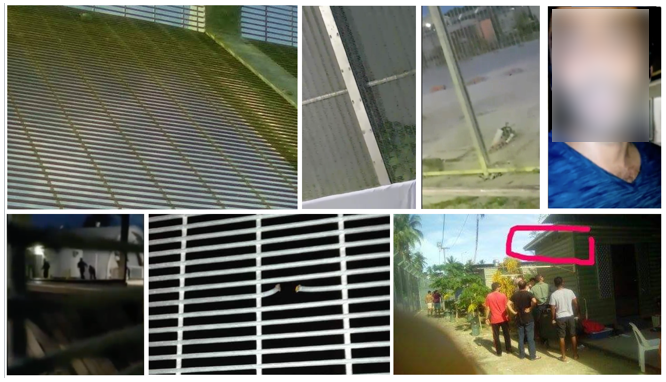
1. Eliminating prior instances
Has this content has appeared online before April 14? Reverse image search saves the skin of the open-source investigator. We always run content through Google Image Search and TinEye as they query different image databases and we want to make sure they haven’t been indexed in one but not the other.
While reverse-image search is primarily a tool for still assessing images, we also used it on videos by checking the four key frames indexed by YouTube. This is, in effect, taking a still frame from a video and treating it as an image. To do this, we use a tool built by Amnesty called the YouTube Data Viewer.
In this case, none of the images nor videos appeared online before April 15. At this stage we have no information that suggests the material existed prior to the event, and thus it warrants further investigation.
2. Corroborating the location
Determining the location of the images can be tricky in secretive or controlled locations like the detention centre on Manus Island, where journalists have had rare access. Corroborating that the images were taken at the centre required checking against any available images of the centre. Flickr, while limited because it’s lost its luster to other photo-sharing platforms, can be a good place to search for older pictures published by official sources. A quick Flickr search for “Manus Island Detention Centre” on the site brought up an album of images taken in 2013 by a delegation of Australian Green Party MPs.
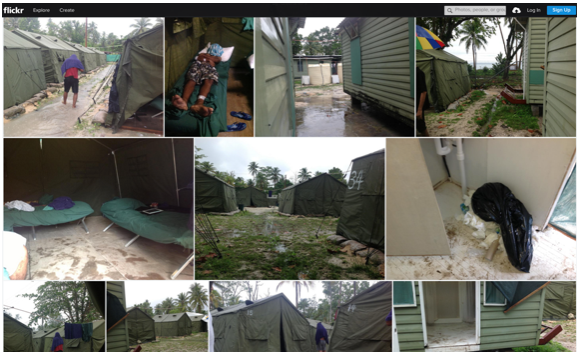
The Green MPs album was a good start to verifying the location, and illustrates another good use for reverse-image search. A reverse-image search of the pictures taken by the Green MP Sarah Hanson-Young allowed us to find more published images. With Hanson-Young’s photos, we created a reference collage of what the buildings looked like on Manus Island.
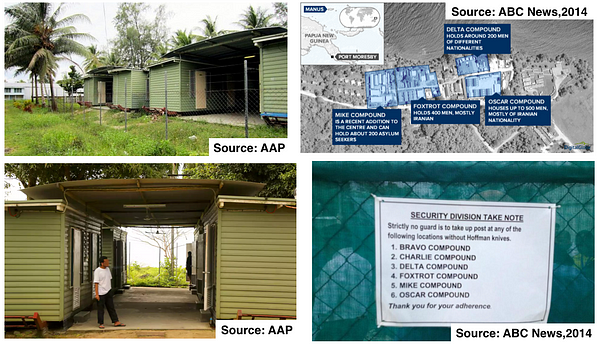
Finding this corroborating information was key to unlocking what happened on the night of April 14 from afar.
3. Finding the spot
Articles and additional information reported that the shooting occurred at the Fox Compound. While the Fox Compound didn’t correspond exactly on any reference maps we uncovered, there was reference to a “Foxtrot Compound” in a 2014 map prepared by ABC News, which gave us an initial clue for where to search in satellite imagery, first using Google Earth Pro.

Searching for the geocode of Manus Island Detention Centre at -2.0378774 147.367698 provided us with a full satellite view of the centre. On Google Earth, we chose the most recent imagery of the location to review from 2014 and compared it to the annotated ABC map.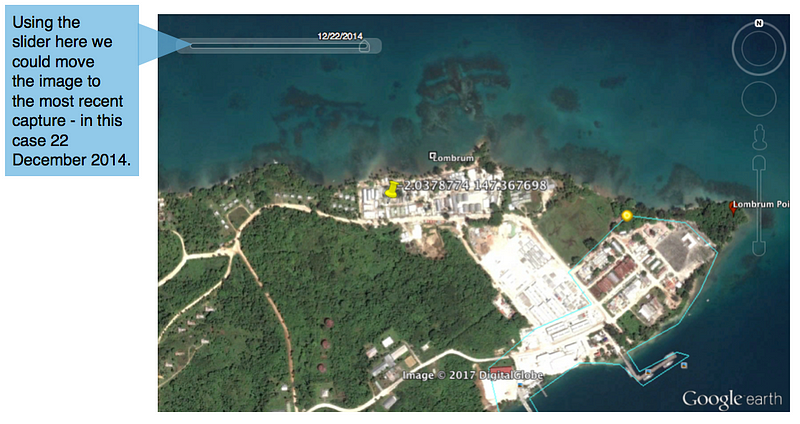
We then zoomed in to the area around Foxtrot compound: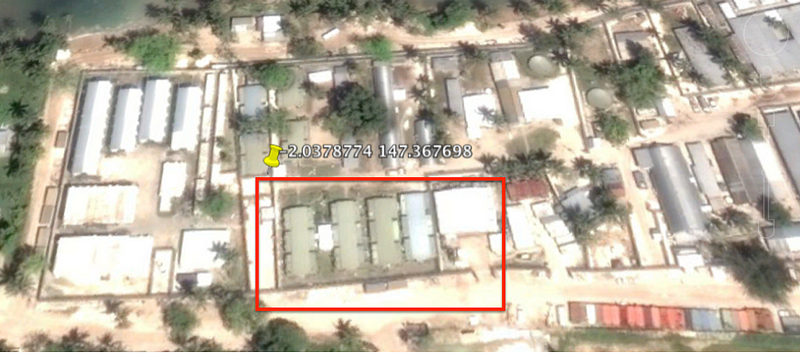
In the red box we see the Foxtrot Compound as identified in the ABC Australia 2014 map. What is distinctive here are the four, green-roofed buildings running north to south with three intersecting bars. These green-roofed buildings are surrounded by a fence to the south and west. Studying these buildings provided much of the corroborating information needed to determine the “where” of this event.
What do we know at this stage? We know that:
- The Flickr album has pictures of green buildings
- Other images online from Manus Island Detention Centre show green buildings
- The event was supposed to have taken place in Foxtrot compound
- Foxtrot compound contains buildings with green roofs
- Social media images of April 14 and the aftermath show green buildings
We then turned to the shape of the buildings and the general geography detailed in the imagery, the corroborating image and the image of the events, to assess whether they triangulated. Upon closer investigation, we saw that they did, with imagery corresponding to features in the satellite imagery.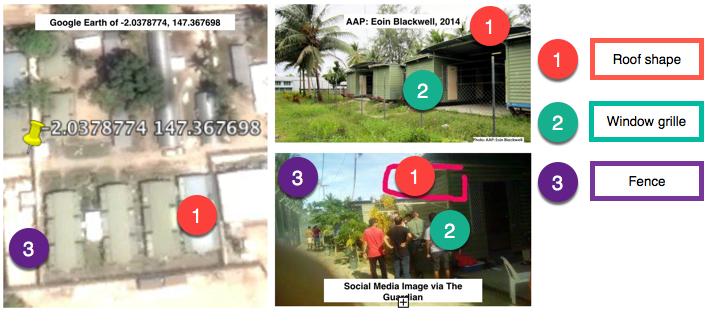
The roof shape (1) in the satellite image matches with the shape of the roof in the social media image and the AAP image. The window grills (2) match in the AAP image and the social media image and the fencing structure (3) matches with the social media image and the satellite image. The images above also match with the images found in the Green Party Flickr album. Finding links between the different pieces of content that you have verified and the piece of content that you are trying to authenticate is a crucial step in the verification process.
We conducted this exercise with more content, which confirmed that events took part in other places in the camp.
For example, this video could be placed at the camp because of the curved building roof: Manus Island Detention Centre — l-r: Screen capture of video shared from April 14, 2017, Google Earth imagery and second screen capture of same video shared from April 14, 2017.
Manus Island Detention Centre — l-r: Screen capture of video shared from April 14, 2017, Google Earth imagery and second screen capture of same video shared from April 14, 2017.
4. Any other clues?
Having determined that the content was from Manus Island Detention Centre, we then looked for other clues, like comparing the fencing in the images from April 14 and 15 to the fencing in earlier images to show that they were the same in terms of grill spacing and the rivets in the posts. One clue that was present in one of the videos was a mobile telephone on a table. The resolution was just enough to suggest models of phone , like a Samsung J7 that became available April 2016.
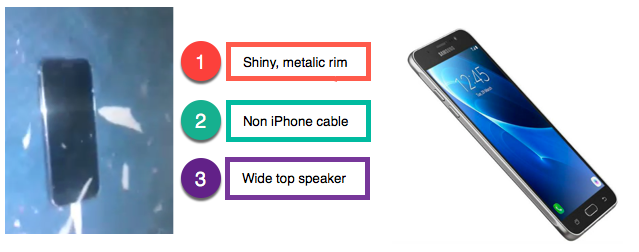
We were unable to confirm if this was a Samsung J7 so we left it out of the final report, but had we been able to do so, it would have given a stronger time-frame for when the images were taken and could say with greater certainty that the video was not captured before April 2016.
Changing the official narrative
Amnesty’s research into the events of April 14, 2017 on Manus Island Detention Centre changed the official narrative. It’s important to note that this research was done sitting around tables and on sofas on different continents. As the power of this content as evidence increases in strength, knowing how to harness and use this power is critical.
Sam Dubberley is a First Draft founding partner and manages the Digital Verification Corps at Amnesty International.



